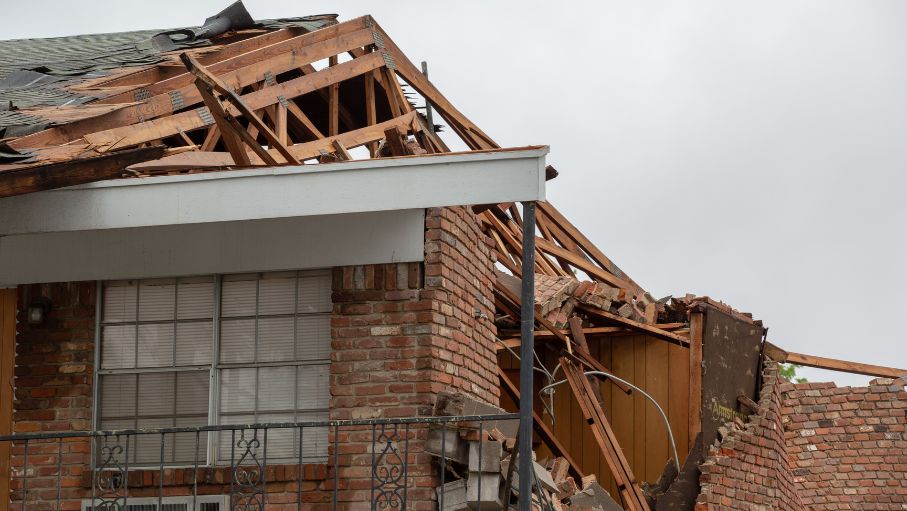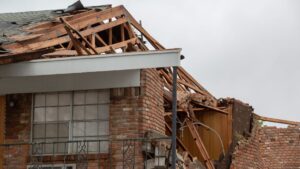Selling a house is a significant task, and it becomes even more challenging when your property has suffered storm damage.
Whether it’s a leaky roof, broken windows, or structural issues, dealing with the aftermath of a storm can be overwhelming. However, you can successfully navigate the process and find a buyer with the right approach.
This guide will walk you through the essential steps, from assessing the damage and deciding on repairs to setting a fair price and marketing your home effectively, ensuring a smoother selling experience despite the challenges.
Understanding Storm Damage
First, let’s understand storm damage. Storm damage can occur when severe weather events like hurricanes, tornadoes, or heavy rainstorms hit your area. This damage can range from minor issues like broken windows to major problems like roof leaks or structural damage. Knowing the extent of the damage is crucial so you can address it properly.
Initial Steps After Storm Damage
When you first notice storm damage, your safety is the top priority. Ensure that your house is safe to enter. If you’re unsure, having a professional inspect it is best. Once it’s safe, document the damage thoroughly. Take plenty of photos and videos, capturing every detail. This documentation will be invaluable for your insurance claim and for discussing the property with potential buyers.
Next, contact your insurance company. Inform them about the damage and initiate the claims process. They will send an adjuster to assess the damage and determine what your policy covers. Having your documentation ready will help this process go smoothly.
Deciding on Repairs vs. Selling As-Is
Now comes a crucial decision: should you repair the damage or sell the house as-is? Let’s explore both options in detail.
- Repairing the Damage: Fixing the damage can make your house more appealing to buyers and increase its value. However, repairs can be costly and time-consuming. You’ll need to get estimates from contractors to understand the expenses involved. Consider whether the potential increase in sale price justifies the repair costs.
- Selling As-Is: If you prefer not to handle repairs, you can sell the house as-is. This means the buyer will take responsibility for fixing the damage. Selling as-is might attract investors or cash buyers looking for a project. However, be prepared to accept a lower price since the buyer will factor in the cost of repairs.
Legal and Disclosure Requirements
When selling a house with storm damage, honesty is essential. You must disclose any damage and repairs made to potential buyers. This isn’t just a good practice; it’s often a legal requirement. Being transparent about the condition of your house helps build trust with buyers and can prevent legal issues down the road.
Setting a Realistic Price
Pricing a storm-damaged house can be challenging. You want to set a price that’s fair and competitive. Here are some tips to help you:
- Get a Property Appraisal: A professional appraiser can assess your house’s value in its current condition. This appraisal will give you a solid foundation for setting your asking price.
- Do Market Research: Look at similar houses in your area that have sold recently. This research will give you an idea of what buyers will pay for properties like yours.
Marketing Strategies for Storm-Damaged Properties
Once you’ve set a price, it’s time to market your house. Here are some strategies to attract potential buyers:
- Target the Right Audience: Focus on buyers interested in fixer-uppers or investment properties. These buyers might be more willing to take on a house with damage.
- Highlight the Potential: Use professional photos to show the damage and the house’s potential. Point out features like a great location, spacious layout, or a large yard that might appeal to buyers.
- Use Online Platforms: List your house on popular real estate websites and leverage social media to reach a wider audience. The more people see your listing, the better your chances of finding a buyer.
Working with Real Estate Professionals
Selling a house with storm damage can be complex, so consider working with a real estate agent. An experienced agent can help you set a price, market your house, and negotiate with buyers. They can also provide valuable advice and support throughout the process, making it less stressful.
Alternative Selling Options
If you’re looking for a quick sale, consider selling to cash buyers or real estate investors. These buyers often purchase houses as-is and can close the deal quickly. While you might receive a lower price, this option can save you time and effort, especially if you’re eager to move on.
Conclusion
Selling a house with storm damage is undoubtedly a challenge, but you can successfully navigate the process with the right approach. Remember to assess the damage, decide whether to make repairs and be transparent with potential buyers. By setting a realistic price and using effective marketing strategies, you can find the right buyer for your house.
FAQs
What should I do first if my house has storm damage?
Ensure the house is safe to enter, then document the damage with photos and videos for insurance and potential buyers.
Is it better to repair storm damage before selling?
It depends on your situation. Repairs can increase value but are costly. Selling as-is might attract investors but at a lower price.
Do I need to disclose storm damage to buyers?
Yes, it’s important to be transparent about any damage and repairs. This builds trust and is often legally required.
How do I set a price for a storm-damaged house?
Get a property appraisal and research local market conditions to set a fair and competitive price.
Can I sell my storm-damaged house quickly?
Yes, selling to cash buyers or real estate investors can expedite the process, though it might result in a lower sale price.










